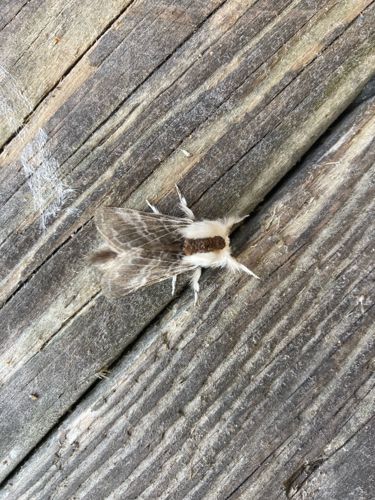Pine Devil Moth (larva) or various Flannel Moths (adult)
Scientific Name: Citheronia sepulcralis (for Pine Devil Moth larva resembling the adult pictured, or an unidentifiable species of Megalopygidae)
Order & Family: Lepidoptera (moths and butterflies), Family: Megalopygidae (flannel moths)
Size: Wingspan typically ranges from 2.5 to 4.5 cm (1 to 1.75 inches).

Natural Habitat
Adult flannel moths are found in woodlands, forests, and suburban areas where their host plants (various trees and shrubs) are present. The larvae feed on a variety of broadleaf trees and occasionally conifers depending on the specific species.
Diet & Feeding
Adult flannel moths generally do not feed, or they consume only nectar for energy during their short lifespan. The larvae (caterpillars) are herbivorous, feeding on the leaves of various trees and shrubs.
Behavior Patterns
Flannel moths are often nocturnal, attracted to lights at night. The adults have a short lifespan, primarily focused on reproduction. The caterpillars, known as puss caterpillars or 'asp' caterpillars, are slow-moving and covered in dense, venomous setae (hairs) for defense. They undergo complete metamorphosis, pupating in a silken cocoon often incorporating their urticating hairs.
Risks & Benefits
Potential risks: The larvae (caterpillars) of flannel moths are venomous. Touching the caterpillar can cause an immediate, intense stinging pain, rash, swelling, and sometimes systemic reactions like nausea, headache, and abdominal pain. The venomous hairs can embed in the skin, causing prolonged irritation. Benefits: As with many insects, they serve as a food source for other animals in the ecosystem and can contribute to pollination, though this is not their primary ecological role. Their feeding as larvae is generally not destructive to host plants unless there is a severe outbreak.
Identified on: 9/25/2025